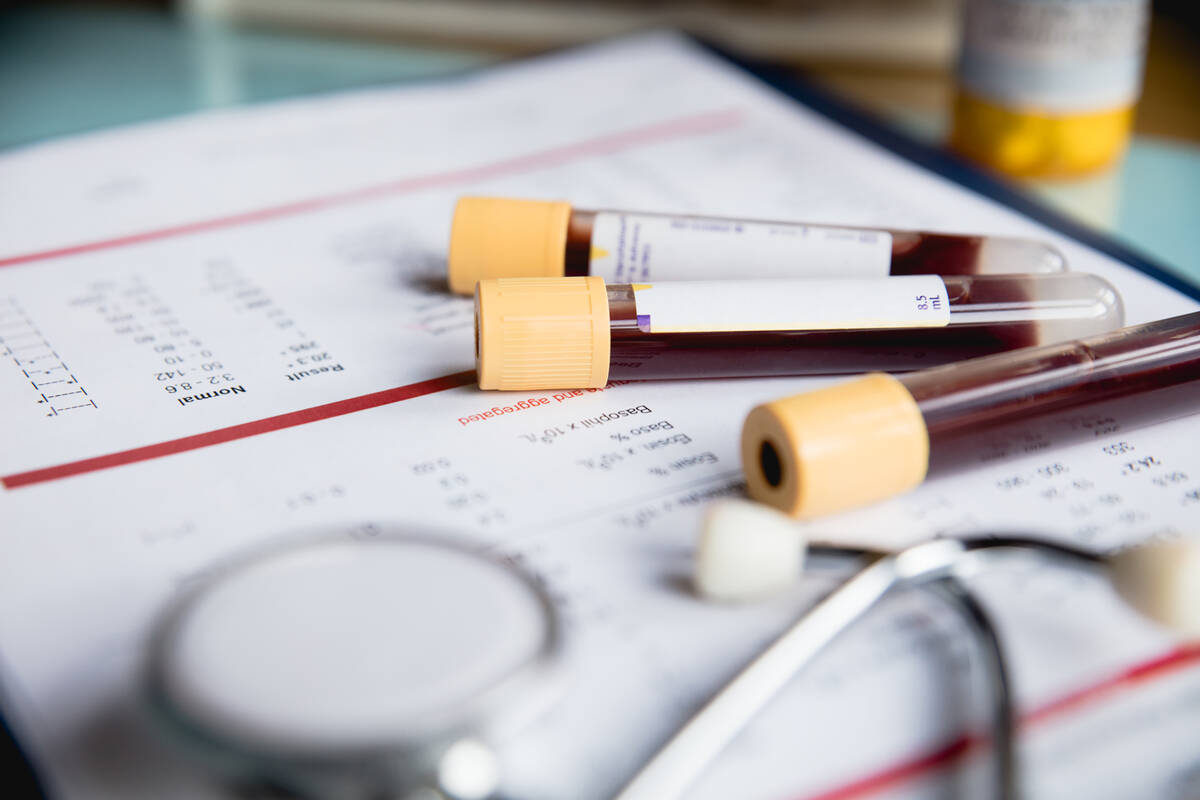These lesser-known numbers in a blood test may aid heart health
When you get the results from a routine blood screening, some familiar terms and numbers may jump out: cholesterol levels that point to a risk for heart disease, for example, and A1C, a blood sugar measurement used to diagnose diabetes.
But are there other numbers that merit a closer look?
“There are lesser-known numbers to look at regarding heart-related risk,” said Dr. Elliot Davidson, medical director of the Center for Family Medicine at Cleveland Clinic Akron General in Ohio. “They can be helpful for anybody on the fence about taking medication.”
Standard blood work typically includes tests for liver and kidney function that are “important considerations for the heart,” said Dr. Parag Joshi, a preventive cardiologist and an associate professor at UT Southwestern Medical Center in Dallas. “That kind of stuff is important to know.”
First, the basics: Health care professionals encourage people to monitor five numbers to track their heart health: blood pressure; blood sugar, or glucose; cholesterol; body mass index or waist measurement; and sleep duration.
Davidson and Joshi said there are more results on your blood test to consider as well.
Non-HDL cholesterol
The total cholesterol number is calculated by adding HDL (“good” cholesterol), LDL (“bad” cholesterol) and 20 percent of the triglyceride number. Triglycerides are the most common type of fat in the body. They store excess energy from your diet. High LDL cholesterol and triglyceride levels, along with low HDL, contribute to fatty buildup in arteries.
If you take the total cholesterol number and subtract the HDL, you get the non-HDL cholesterol. “Sometimes that picks up some risk that the LDL or the triglycerides and the total (numbers) don’t totally capture and that we might be missing if we just focus on the usual results,” Joshi said.
Non-HDL cholesterol is measured in deciliters of blood. An optimal range for non-HDL in adults would be less than 130 mg/dL, according to the National Institutes of Health.
Doctors can use cholesterol and blood pressure results, as well as other health factors, to calculate the risk for having a heart attack, stroke or other disease caused by the buildup of plaque in arteries, Davidson said.
People can work with health care professionals to calculate their risk. Tools are available from the American College of Cardiology and the American Heart Association, which recently released a new risk calculator that incorporates kidney function and other newly added factors. The AHA tool can predict risk for heart attack, stroke and heart failure over the next 10 years and 30 years in people ages 30 to 79.
“Even if you have a low 10-year risk, you might have a pretty significant lifetime risk,” Davidson said.
Lipoprotein(a)
Another measurement to know is lipoprotein(a), a larger type of “bad” cholesterol that can build up in arteries and increase the risk of a heart attack or stroke. It’s mostly genetic, Joshi said, rather than caused by lifestyle factors, and no treatments have yet been proven to lower lipoprotein(a) levels.
About 1 in 5 people worldwide have high lipoprotein(a) levels, according to the American Heart Association.
“For people with a strong family history of heart disease or early strokes or early blockages, it sometimes shows up as the only risk factor we can identify,” Joshi said. “It is something I often check in preventive cardiology, and people are becoming more aware of it.”
There is no consensus on risk thresholds for lipoprotein(a) levels, but AHA and ACC guidelines consider a high measurement to be 50 mg/dL or higher.
Hemoglobin
When patients report they are fatigued, that’s a reason to focus on their hemoglobin, or red blood cell count, Davidson said.
“If it’s lower than it should be, you have to look for a reason,” he said. “A common cause would be gastrointestinal blood loss. You’ve got to make sure you’re not losing blood somewhere.”
A low count, a condition called anemia, also may be caused by iron and vitamin deficiencies.
Normal ranges for hemoglobin can vary slightly, but in general they are 13.5 g/dL to 18 g/dL for men, 12 g/dL to 15 g/dL for women, and 11 g/dL to 16 g/dL for children.
Creatinine
Blood tests for kidney and liver function also can indicate cardiovascular risk, Joshi said.
The level of creatinine, a waste product formed by digestion of protein, is a marker of kidney function. “It’s supposed to be cleared out in the blood by the kidneys,” Joshi said. “If the creatinine in the blood goes up, the kidneys aren’t doing a good job.”
Protein in urine is another risk indicator, he said, “because the kidneys are supposed to retain all your proteins. So, if you’re losing protein through your urine, there’s something wrong with the kidney. We’re learning a lot about how kidney problems increase the risk of heart problems, and vice versa.”
Davidson noted that high creatinine levels are “not only an independent marker for heart disease, but you have to be very careful about certain medications like ibuprofen and other things that would aggravate your kidney function.”
Creatinine levels above 1.2 for women and 1.4 for men may be cause for concern, according to the Centers for Disease Control and Prevention.
Liver enzymes
Tests for liver enzymes known as ALT and AST can indicate impaired liver function or unhealthy fat deposits in the liver, Joshi said. There are several reasons for elevated ALT or AST, he said. “But one of those reasons is this deposition of fat in the liver, and that is a marker of increased risk of heart disease in the future.”
The enzymes are measured in units per liter. For ALT, a standard range is 29-33 for men and 19-25 for women. AST levels should be less than 35.
The bottom line, according to Davidson: “Have a primary care doctor that you trust, keep in close contact, and discuss your blood work.”


















